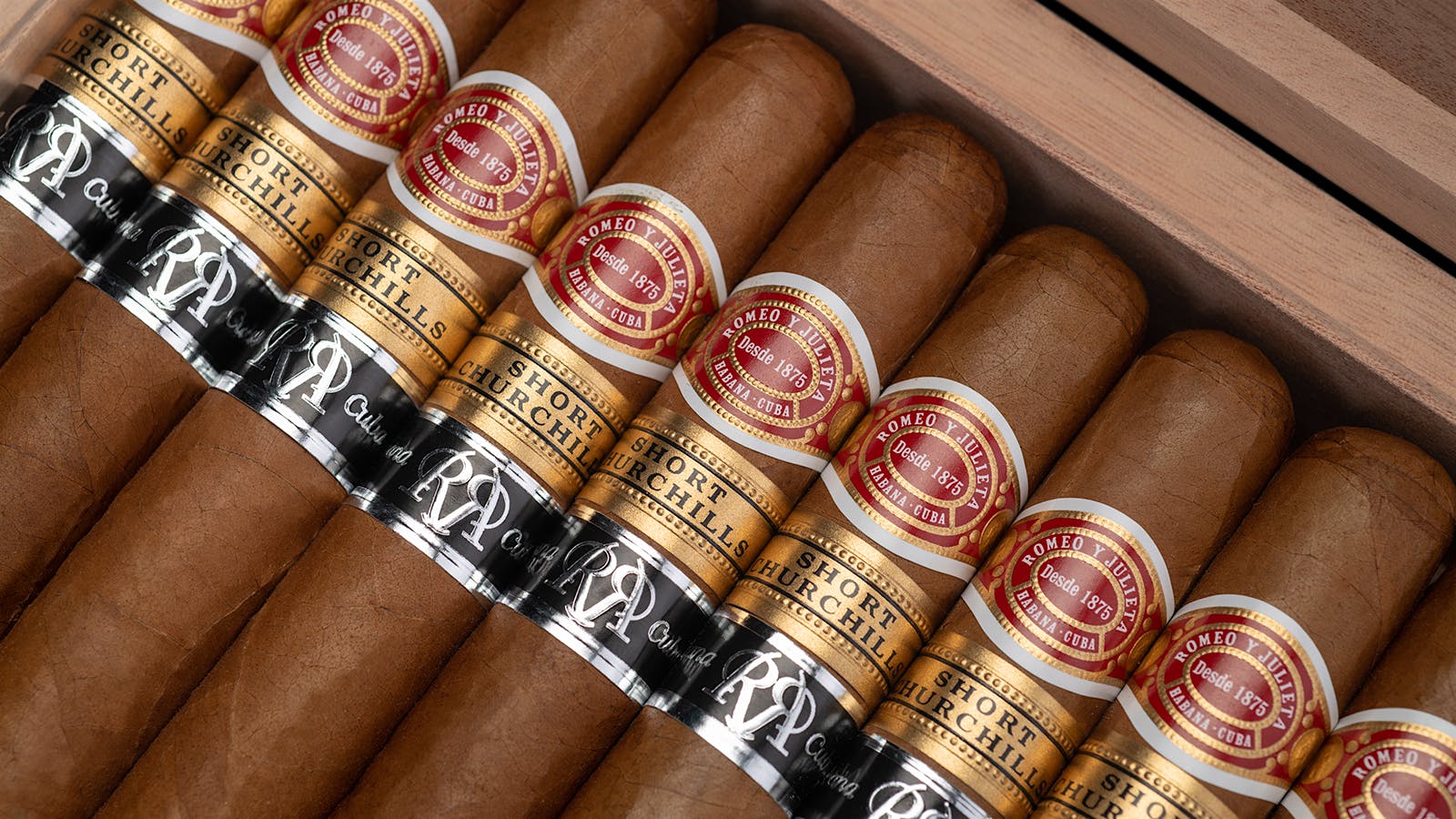I was completely stumped and had no idea where to begin. Starting something new is always overwhelming, especially when it's your first time. It dawned on me that my first article for Cigar Keep should be a tribute to the cigar brand that ignited my passion for smoking. So, this first article will be a tribute to the renowned Marca Romeo y Julieta.
Back Where It All Started
The captivating tale of Romeo y Julieta cigars begins with the two Asturian Spanish immigrants, Inocencio Álvarez Rodríguez and Jose "Manin" Garcia, who journeyed to Cuba at a young age. Álvarez spent many years honing his craft at the H. Upmann factory, eventually climbing the ranks to a director position. This deep-rooted knowledge of the tobacco industry would prove instrumental in his future endeavours. Driven by his passion and experience, he left his post at H. Upmann, and joined by his partner, Garcia, established his own cigar company inspired by Shakespeare's timeless tragedy.
The brand Romeo y Julieta brand was born in 1875 and its small initial factory was officially registered at 87 San Rafael Street in Havana, Cuba, although some resources state that the brand was already in existence earlier than 1875. The partnership between Álvarez and Garcia flourished for eleven years and proved to be a huge market success. Alvarez y Garcia's Romeo y Julieta was most popular in Europe, especially Great Britain. The brand was known for its meticulous oversight of the entire production process, from sorting to packaging. It was highly respected for their visually appealing packaging that accurately represented the quality of the cigars. Despite its small factory, Romeo y Julieta was one of the most successful brands under Alvarez y Garcia's supervision.
In 1885, Donato Argüelles, the son-in-law of Inocencio Álvarez, joined the company as the director of the company. Manín García, however, decided to leave the partnership the following year in 1886, leaving Inocencio Álvarez as the sole proprietor.
Donato Argüelles’ brother, Ramon Argüelles, would play a crucial role in the future of Romeo y Julieta along with his close friend Jose Rodriguez Fernández (known as “Don Pepín”), a prominent figure in the Cuban tobacco industry. The trio along with two other partners, Antonio Rodes and Baldomero Fernández, would establish a company named Rodriguez Argüelles y Cia, that would play a key role in expanding and securing the company's future, and whose name would adorn the cigar Anilla until around 2008.
Dawn of a New Era
As the 19th century drew to a close, the cigar industry faced unprecedented challenges, largely due to the Cuban War of Independence. As a result of this hardship, Romeo y Julieta was sold to Rabell, Acosta y Cía in 1900 and to sold again three years later in 1903 to José Rodríguez Fernández representing the company Rodríguez, Argüelles y Cía.
Under Don Pepín's leadership, Romeo y Julieta experienced significant growth. Through innovative marketing strategies and business acumen, he transformed the company into one of Cuba's leading cigar manufacturers. In 1904, as the original factory on O'Reilly Street became too small, Don Pepín moved production to a larger building on Belascoaín 2A in Havana.
After adding an extra floor, the new Romeo y Julieta factory officially opened its doors in 1905. Renowned for its modern design and size, the factory occupied an area of 1,960 square meters and employed over 1,000 people, including 750 skilled cigar rollers who produce 20 million cigars annually.
Under the stewardship of Don Pepín, Romeo y Julieta experienced a remarkable resurgence, gaining global recognition. To protect this property, he registered the trademark Romeo y Julieta in the International Union in Bern, Switzerland in 1909 under number 7792.
One of the most famous cigars associated with Romeo y Julieta is the Churchill. Originally produced between 1910 and 1919. According Min Ron Nee’s book AN ILLUSTRATED ENCYCLOPAEDIA OF POST-REVOLUTION HAVANA CIGARS "The 'Churchill” size is accredited to have been created by the Romeo y Julieta Factory in the 1910's. Legend has it that this size was specially produced for French Prime Minister Georges Clemenceau (1906 - 1909, 1917 - 1920). As a tribute to his efforts in the post-World War I peace conference in Versailles, the cigars he smoked were put into permanent commercial production with the model name 'Clemenceau'. The Clemenceau was produced without interruption until the late 1980's when it was discontinued." Afterward, Romeo y Julieta added a new cigar with the same vitola Julietta No.2 (47x178mm) to honour the British Prime Minister Winston Churchill , featuring special bands bearing his name, creating the basis for future one of the most popular lines in Habanos S.A. portfolio, the Línea Churchill. Additionally, the Romeo y Julieta became particularly renowned for its Figurado shaped cigars during the 1940s and 1950s.
LA VISTA OF ROMEO Y JULIETA
ROMEO Y JULIETA FACTORY 1910s
ROMEO Y JULIETA FACTORY FACADE
The success of Romeo y Julieta continued until Don Pepín's passing in 1954. Since its establishment it garnered numerous awards, as evidenced by the gold coins adorning their cigar boxes and bands: Antwerp in 1885 and 1894, Brussels in 1888 and 1889, Melbourne in 1888, Paris in 1889 and 1900, and Liege in 1907. After the Cuban Revolution of 1959, the brand was nationalized. The historic factory, once located on Belascoaín 2A, was relocated to Padre Varela 852 on the same street. The abandoned factory was then converted into a residential building, however, after a fire damaged the roof, the building was demolished, with only the facade of the original factory remaining. Today Romeo y Julieta is classified by Habanos S.A. as a "global" brand by Habanos S.A. and holds a major market share.






